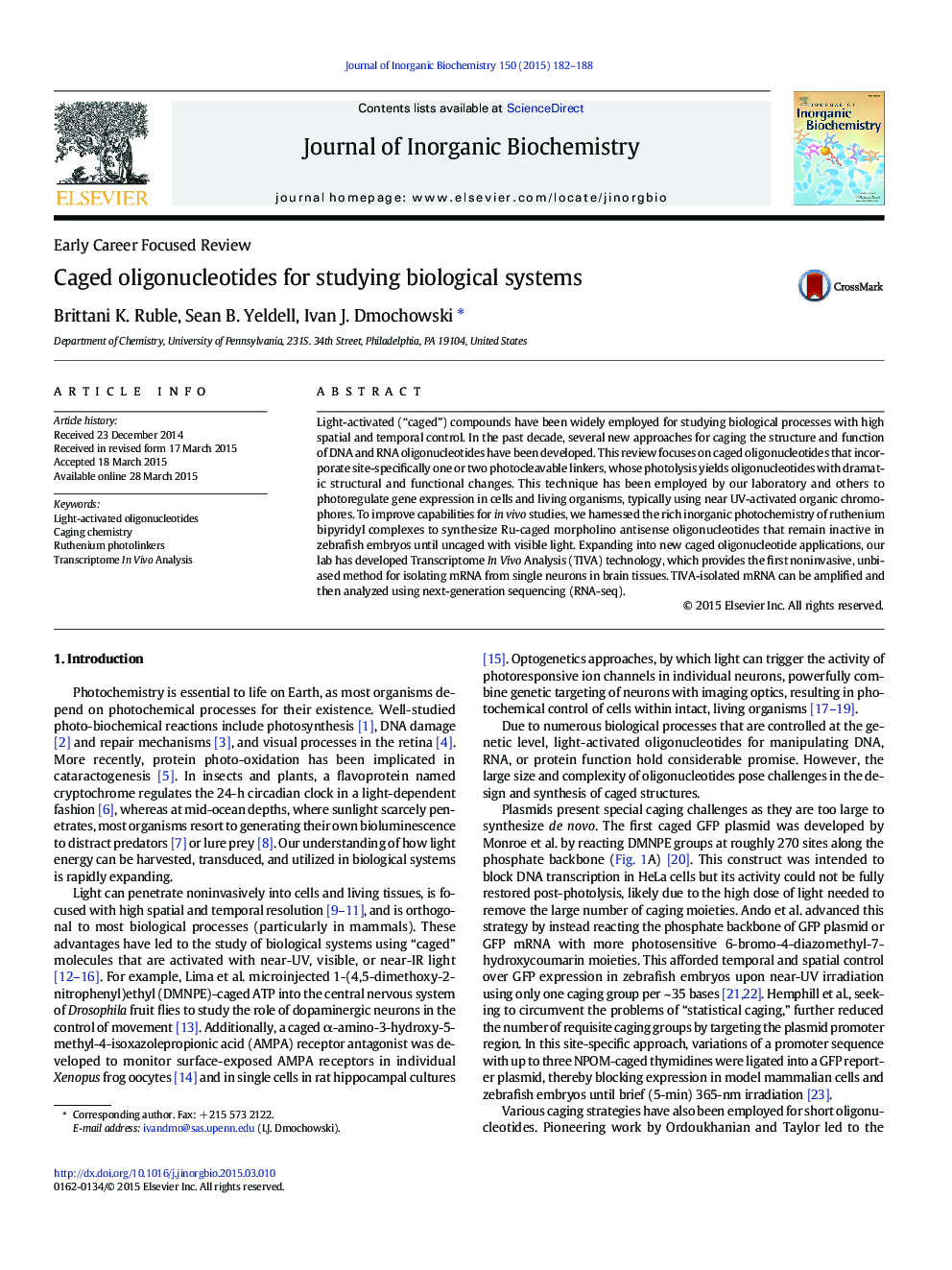| Article ID | Journal | Published Year | Pages | File Type |
|---|---|---|---|---|
| 1315867 | Journal of Inorganic Biochemistry | 2015 | 7 Pages |
•Caged oligonucleotides can be light-activated with high spatial and temporal control.•Applications include regulating gene expression and harvesting mRNA from single cells.•Visible-light-responsive ruthenium photolinkers expand opportunities for multiplexed photo-activation in vivo.
Light-activated (“caged”) compounds have been widely employed for studying biological processes with high spatial and temporal control. In the past decade, several new approaches for caging the structure and function of DNA and RNA oligonucleotides have been developed. This review focuses on caged oligonucleotides that incorporate site-specifically one or two photocleavable linkers, whose photolysis yields oligonucleotides with dramatic structural and functional changes. This technique has been employed by our laboratory and others to photoregulate gene expression in cells and living organisms, typically using near UV-activated organic chromophores. To improve capabilities for in vivo studies, we harnessed the rich inorganic photochemistry of ruthenium bipyridyl complexes to synthesize Ru-caged morpholino antisense oligonucleotides that remain inactive in zebrafish embryos until uncaged with visible light. Expanding into new caged oligonucleotide applications, our lab has developed Transcriptome In Vivo Analysis (TIVA) technology, which provides the first noninvasive, unbiased method for isolating mRNA from single neurons in brain tissues. TIVA-isolated mRNA can be amplified and then analyzed using next-generation sequencing (RNA-seq).
Graphical abstractLight-activated oligonucleotides are enabling biological research. New inorganic photolinkers will expand the range of wavelengths over which these experiments can be performed.Figure optionsDownload full-size imageDownload as PowerPoint slide
